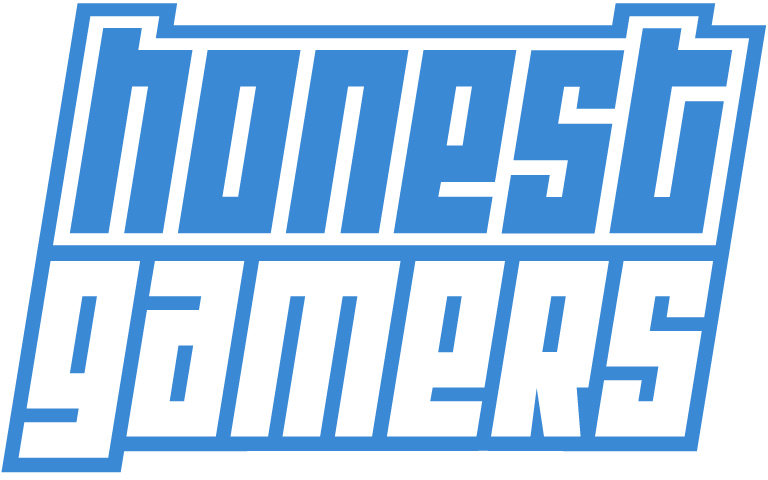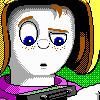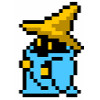Pokemon Blue (Game Boy) review"Pokémon Red and Blue started a huge franchise and helped prolong the Game Boy, getting many casual gamers on board like Tetris did ten years prior. Single-player trainer battles may be mostly mundane, but leveling up feels very rewarding, as does the intentionally difficult task of catching 150 Pokémon. " |
Pokémon is a peculiar franchise. It's an uncommon example of a role-playing game that had mass market appeal, yet it's not so easy to pinpoint how that is. Final Fantasy, while undoubtedly popular, didn't get almost every member of the general public hooked into the craze. Maybe there was an appeal to essentially leveling up cyber pets, and surely the initial roster of 150 meant there were Pokémon for everyone. The likes of Pikachu and Meowth had a cute appeal, whilst hardcore players who wanted to train Pokémon for ass-kicking could opt for the brutal Dragonite’s and Charizard’s.
The Pokémon world also has enough real-life similarities to allow the player to feel emotionally connected with the environment, but remains quite surreal. Ash, to go by his name in the TV anime, becomes old enough to obtain a license to train Pokémon at the ripe old age of ten years. He embarks on an adventure through Kanto’s oceans, forests and mountains to catch wild Pokémon, fight like-minded trainers and defeat the eight Gym leaders of Kanto to earn the respective badges required to take on the Pokémon League. Yet how is he able to do this, and single-handedly disband a criminal organisation before the authorities can en-route, without any parental supervision? Being able to squeeze even a dragon-sized creature a Pokéball adds to the weirdness, and the lack of adult males has even led to conspiracies of this game being set just after a war.
Gym’s appear in most cities, and their battles prove an important benchmark to a Pokémon team’s strength. Raising a Pokemon’s level through battles allows them to learn new moves, and potentially evolve them into stronger forms in the process. Given the many battles against wild Pokémon and trainers in Kanto's routes and dungeons, a lot of the training is effortless. Gym badges though grant crucial abilities for the player to progress. Whilst some allow the player to use higher level Pokémon, others allow certain battle techniques found in Hidden Machine’s (HM) to be used in the field. Found in events or in the wild, the reusable HM’s contain important moves such as the ability to cut down trees or surf on water, teachable to certain Pokémon to fully navigate Kanto's diverse terrain. There are also fifty disposable Technical Machine’s (TM) to be found which mostly contain battle-only techniques. Gym badges may collectively qualify access to the Pokémon League, but Ash won’t be going anywhere if he can’t swim.
A lot of Pokemon’s fun lies in building up a strong team to become the Pokémon League Champion, or battle against a friend’s line-up via a link cable. But shortly after Ash chooses his starting Pokémon from Professor Oak’s lab, Oak sets him the tougher task of completing the Pokédex he gives him by obtaining all 150 Pokémon. Although six Pokémon can be carried for use in battles, the rest can be stored in a database accessible from city Pokémon Centre’s. Catching wild creatures or level evolution accounts for many Pokédex entries. Trading to another cartridge however is essential for completion. Some Pokémon evolve after being traded to another cartridge, and some are only obtainable in one of the two versions of the game. Certain events even present a choice between two or three Pokémon, such as the starting trio in Oak’s lab. For the completionists, this is where the fun lies, where co-ordinating their progress with another friend is necessary to negotiate the ‘either’or’ decisions.
Pokémon’s is additive and entertaining but its difficulty is inconsistent. Catching wild Pokémon is tough and not just because there are so many. Rare types often flee, legendary Pokémon are tough to break down, and many refuse to stay inside the Poke ball thrown at them. When it comes to battles though, trainers are usually one-dimensional with their elemental types. Swimmer trainers always use water type Pokémon, Hiker’s use ground and rock types whilst Bug-Catcher’s use, well, bug. Gym battles at least use higher-level Pokémon, inflict status ailment and use battle items, but they too often specialise in one element. Using a fire Pokémon against Erika who specializes in grass makes for a straightforward battle. A well-trained and diverse team will only encounter problems against Ash’s hometown rival Gary, Gym Leader’s and the Elite Four. Trainer battles provide a lot more experience points than against random encounters in the wild, but serious battles are best played over a link cable.
Pokémon Red and Blue’s mild difficulty doesn’t prevent it providing a stonking experience, and it’s simplicity yet ability to emotionally connect a player in an alternative 8-bit world is remarkable. Non-playable characters are always willing to share their Pokémon knowledge and some are rather humorous, adding everyday human values to the make-believe irregularities of Kanto. Town’s and routes also present a unique distinction that rewards the journey despite the frequent reuse of landscape blocks throughout the game. Kanto, a name that wasn’t used for the region until the second generation, is modeled on the actual Japanese region. Celadon City is the shopping and entertainment hub; Saffron City, full of buildings, is the economic capital; Lavendar Town is a spooky mountain settlement thanks to the Pokémon sanctuary tower and Vermillion City is the regional fishing port. A strong musical score, only limited by the Game Boy’s four-channel sound generator, adds to the vibe.
Pokémon Red and Blue started a huge franchise and helped prolong the Game Boy, getting many casual gamers on board like Tetris did ten years prior. Single-player trainer battles may be mostly mundane, but leveling up feels very rewarding, as does the intentionally difficult task of catching 150 Pokémon. There’s no doubt Pokémon Red and Blue are vastly technically backwards, even when it was released in Europe in 1999. But not many Game Boy games could be excused for using monochrome technology a year after the Game Boy Color was released. The relative simplicity does appeal over subsequent technically superior releases, and there’s plenty of nostalgia to be experienced for many gamers. Overall though, Pokémon Red and Blue are an engrossing experience whose entertainment beats even faster paced action games. Any player battling over link cable though, should check that their friend doesn’t have a level 100 Dragonite in their roster first.
 |  |  |  |  |
Community review by bigcj34 (October 21, 2012)
Cormac Murray is a freelance contributor for HG and is a fanboy of Sega and older Sony consoles. For modern games though he pledges allegiance to the PC Master Race, by virtue of a MacBook running Windows. |
|
More Reviews by bigcj34 [+]
|
|
If you enjoyed this Pokemon Blue review, you're encouraged to discuss it with the author and with other members of the site's community. If you don't already have an HonestGamers account, you can sign up for one in a snap. Thank you for reading!
User Help | Contact | Ethics | Sponsor Guide | Links








